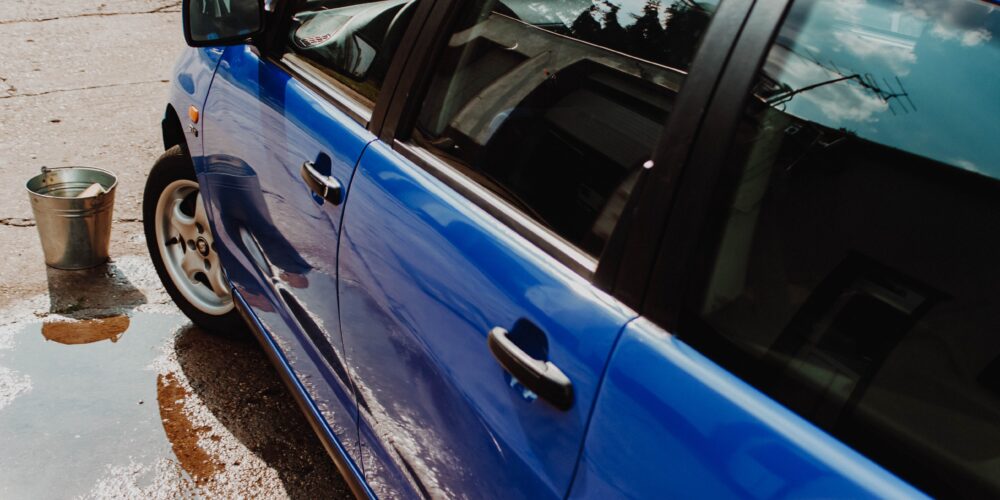With spring just around the corner, there’s no better time than now to give your car a much-needed clean inside and out, ready for the coming months. Scrubbing away all of the dirt and debris from winter driving can leave your car looking and smelling as good as new while giving you the perfect opportunity to check that everything is still in working order. We’ve put together some of our tips, tricks and must-dos for your big spring clean.
Do A Full Check Or Book In For A Service
When it comes to spring cleaning your car, you have the perfect opportunity to check it over from bumper to bumper, top to bottom. This could also be the perfect opportunity to check the car’s service history and whether you’re due for the next one. If so, book in your service while doing your spring clean and get ahead of yourself! In the meantime, doing your own manual checks can give you a better idea of what might need changing, fixing or maintenance along the way. Check the engine for any potential faults or issues and check the interior for anything that might need a bit of TLC. From there, you can determine what you can fix yourself, and what might need the help of a mechanic.
Brush Surfaces Before You Vacuum
There are two types of brush you can use to make the spring cleaning process a breeze – a soft-bristled brush, and a stiff brush. Dusting off the main surfaces of the car, including the dashboard, any vents, crevices in and around the centre console and the crevices of the seats will dislodge any stubborn dust or dirt, ready to be vacuumed. Similarly, a stiff brush can do wonders for getting your seats and carpets as good as new. We’ve all faced some stubborn dirt in our cars from time to time, dirt that a vacuum alone might not be able to budge but by loosening the dirt and stains with a stiff brush ahead of vacuuming, you stand a better chance of clearing it completely.
Don’t Forget The Tyres
You should be checking your tyres regularly for wear and damage, but a spring clean is also the perfect opportunity to get them looking good too. Use non-acidic products for the perfect clean that won’t damage your tyres, and use a stiff brush to really break through the grime and dirt buildup from the past few months. Smaller brushes can be good for crevices or for pulling stones out of the tread, and for making sure that every nook and cranny is clean. Use tyre shine to finish off – though not on the main part of the tyre – for a truly put-together look.
Check Filters And The Engine
If you’ve been experiencing some sluggish performance from your car lately, it could be time to change the air filter. It’s advised to change the air filter once every 12 months, or every 12,000 miles, depending on which comes first. A simple filter change could make a huge difference to your vehicle’s fuel economy, and general performance. Similarly, checking and changing any fluids where needed – including coolant, antifreeze, oil and power steering – can optimise the performance further. If you’re unsure how to flush and replace these fluids, a qualified mechanic can help.
Replace The Wiper Blades
Wiper blades need to be replaced relatively regularly, though especially if you’ve been noticing any reduced performance. If your wipers are leaving streaks or are skipping or juddering along the windshield, it could be time to replace them. Wipers are relatively inexpensive and simple to both take off and replace but feel free to get in touch for advice if you get stuck.
Take Time To Wash Every Crevice
Taking out the time to really get in with a detail brush along each crevice in your vehicle will not only give it that extra touch of cleanliness, but leave you feeling satisfied. This should be the case for both in and outside of the car. Using a brush, you can agitate the dirt and use a vacuum to pull out any dirt that you’ve dislodged, or use a hose or jetwash on the exterior after agitating around the manufacturer’s badge, the wheel bolts and in the gaps along the grille.
Check And Adjust Tyre Pressure
As the weather changes, the air pressure in your tyres can change, which is why it’s important to check them regularly. You can find the required pressure for your particular vehicle in the car’s handbook, or in most cases, on a sticker just inside the driver’s door for a quick reference. You can use your own air pressure gauge, or utilise a machine at the nearest petrol station to adjust them accordingly. Driving with low pressure can damage the tyres and ruin your fuel economy.
Finish Off With A Wax Or Shine
Once the car has been cleaned top-to-bottom, finish off the exterior with good wax. Ideally, this should be done out of direct sunlight for the best results. Whether you opt for a liquid, spray or cream wax is up to you, but make sure to test any new products on a hidden part of the vehicle’s paintwork first to be sure that it not only works but doesn’t cause any damage. Waxing your car will not only give it that sought-after shine but can add a layer of protection against dirt and debris for the weeks to come.
For more information about how to spring clean your vehicle, or how we can help with car servicing or repairs, feel free to get in touch with a member of our team, today.

